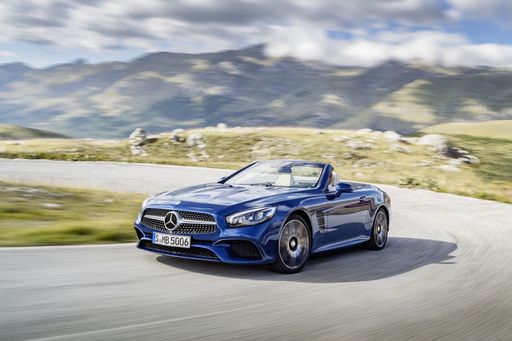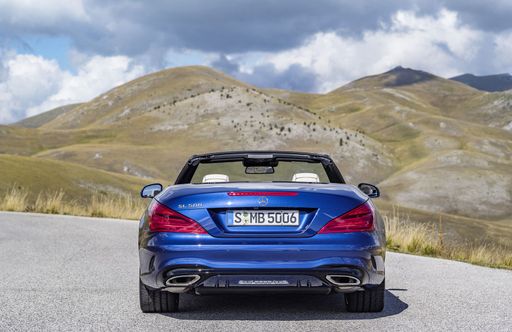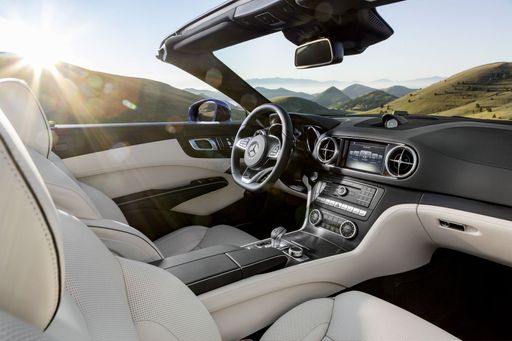Alfa Romeo Junior vs Mercedes SL Class – Performance, range & efficiency compared
Compare performance, boot capacity, efficiency and price at a glance.
Find out which car is the better choice for you – Alfa Romeo Junior or Mercedes SL Class?
Costs and Efficiency:
Price and efficiency are key factors when choosing a car – and this is often where the real differences emerge.
Alfa Romeo Junior has a convincingly advantage in terms of price – it starts at 25700 £, while the Mercedes SL Class costs 112700 £. That’s a price difference of around 87033 £.
Fuel consumption also shows a difference: Alfa Romeo Junior manages with 4.80 L and is therefore significantly more efficient than the Mercedes SL Class with 9 L. The difference is about 4.20 L per 100 km.
As for range, the Alfa Romeo Junior performs convincingly better – achieving up to 410 km, about 398 km more than the Mercedes SL Class.
Engine and Performance:
Power, torque and acceleration are the classic benchmarks for car enthusiasts – and here, some clear differences start to show.
When it comes to engine power, the Mercedes SL Class has a clearly edge – offering 816 HP compared to 280 HP. That’s roughly 536 HP more horsepower.
In acceleration from 0 to 100 km/h, the Mercedes SL Class is significantly quicker – completing the sprint in 2.90 s, while the Alfa Romeo Junior takes 5.90 s. That’s about 3 s faster.
In terms of top speed, the Mercedes SL Class performs clearly perceptible better – reaching 317 km/h, while the Alfa Romeo Junior tops out at 206 km/h. The difference is around 111 km/h.
There’s also a difference in torque: Mercedes SL Class pulls clearly stronger with 1420 Nm compared to 345 Nm. That’s about 1075 Nm difference.
Space and Everyday Use:
Cabin size, boot volume and payload all play a role in everyday practicality. Here, comfort and flexibility make the difference.
Seats: Alfa Romeo Junior offers slightly more seating capacity – 5 vs 4.
In curb weight, Alfa Romeo Junior is clearly perceptible lighter – 1380 kg compared to 1810 kg. The difference is around 430 kg.
In terms of boot space, the Alfa Romeo Junior offers convincingly more room – 415 L compared to 240 L. That’s a difference of about 175 L.
When it comes to payload, Alfa Romeo Junior a bit takes the win – 420 kg compared to 375 kg. That’s a difference of about 45 kg.
Who comes out on top?
Overall, the Alfa Romeo Junior shows itself to be outperforms in nearly all aspects and secures the title of DriveDuel Champion.
It convinces with the more balanced overall package and proves to be the more versatile choice for everyday use.
 @ Alfa Romeo / Stellantis Media
@ Alfa Romeo / Stellantis Media
Alfa Romeo Junior
Alfa Romeo Junior
The Alfa Romeo Junior captures the essence of Italian design with its sleek lines and compact dimensions, making it an icon of elegance and performance. With a spirited driving experience and a charming retro aesthetic, it appeals to enthusiasts and casual drivers alike. This delightful car embodies the brand's rich heritage while remaining a fun and engaging option for those seeking a unique automotive experience.
details @ Alfa Romeo / Stellantis Media
@ Alfa Romeo / Stellantis Media
 @ Alfa Romeo / Stellantis Media
@ Alfa Romeo / Stellantis Media
 @ Alfa Romeo / Stellantis Media
@ Alfa Romeo / Stellantis Media
Mercedes SL Class
The Mercedes-Benz SL-Class embodies a perfect fusion of performance and luxury, offering a driving experience that is both exhilarating and refined. Its sleek and aerodynamic design ensures a commanding presence on the road, while the sumptuous interior provides unparalleled comfort and cutting-edge technology. With a heritage of engineering excellence, this model stands as a testament to Mercedes-Benz's commitment to innovation and craftsmanship.
details @ Mercedes-Benz Group Media
@ Mercedes-Benz Group Media
 @ Mercedes-Benz Group Media
@ Mercedes-Benz Group Media
 @ Mercedes-Benz Group Media
@ Mercedes-Benz Group Media
 @ Mercedes-Benz Group Media
@ Mercedes-Benz Group Media
 @ Alfa Romeo / Stellantis Media
@ Alfa Romeo / Stellantis Media
|
 @ Mercedes-Benz Group Media
@ Mercedes-Benz Group Media
|
|
|
|
Costs and Consumption |
|
|---|---|
|
Price
25700 - 41600 £
|
Price
112700 - 219300 £
|
|
Consumption L/100km
4.8 - 5.4 L
|
Consumption L/100km
9 - 13.6 L
|
|
Consumption kWh/100km
15.1 - 17.5 kWh
|
Consumption kWh/100km
-
|
|
Electric Range
344 - 410 km
|
Electric Range
12 km
|
|
Battery Capacity
0.4 - 51 kWh
|
Battery Capacity
-
|
|
co2
0 - 119 g/km
|
co2
206 - 309 g/km
|
|
Fuel tank capacity
44 - 45 L
|
Fuel tank capacity
70 L
|
Dimensions and Body |
|
|---|---|
|
Body Type
SUV
|
Body Type
Roadster
|
|
Seats
5
|
Seats
4
|
|
Doors
5
|
Doors
2
|
|
Curb weight
1380 - 1689 kg
|
Curb weight
1810 - 2195 kg
|
|
Trunk capacity
340 - 415 L
|
Trunk capacity
110 - 240 L
|
|
Length
4173 mm
|
Length
4697 - 4705 mm
|
|
Width
1781 mm
|
Width
1915 mm
|
|
Height
1505 - 1538 mm
|
Height
1354 - 1359 mm
|
|
Max trunk capacity
1205 - 1280 L
|
Max trunk capacity
-
|
|
Payload
390 - 420 kg
|
Payload
145 - 375 kg
|
Engine and Performance |
|
|---|---|
|
Engine Type
Electric, Petrol MHEV
|
Engine Type
Petrol MHEV, Petrol, Plugin Hybrid
|
|
Transmission
Automatic
|
Transmission
Automatic
|
|
Transmission Detail
Dual-Clutch Automatic, Reduction Gearbox
|
Transmission Detail
Automatic Gearbox
|
|
Drive Type
Front-Wheel Drive, All-Wheel Drive
|
Drive Type
Rear-Wheel Drive, All-Wheel Drive
|
|
Power HP
136 - 280 HP
|
Power HP
381 - 816 HP
|
|
Acceleration 0-100km/h
5.9 - 9.1 s
|
Acceleration 0-100km/h
2.9 - 4.9 s
|
|
Max Speed
150 - 206 km/h
|
Max Speed
260 - 317 km/h
|
|
Torque
230 - 345 Nm
|
Torque
480 - 1420 Nm
|
|
Number of Cylinders
3
|
Number of Cylinders
4 - 8
|
|
Power kW
100 - 207 kW
|
Power kW
280 - 600 kW
|
|
Engine capacity
1199 cm3
|
Engine capacity
1991 - 3982 cm3
|
General |
|
|---|---|
|
Model Year
2024 - 2025
|
Model Year
2025
|
|
CO2 Efficiency Class
A, C, D
|
CO2 Efficiency Class
G
|
|
Brand
Alfa Romeo
|
Brand
Mercedes-Benz
|
What drive types are available for the Alfa Romeo Junior?
Available configurations include Front-Wheel Drive or All-Wheel Drive.
The prices and data displayed are estimates based on German list prices and may vary by country. This information is not legally binding.
